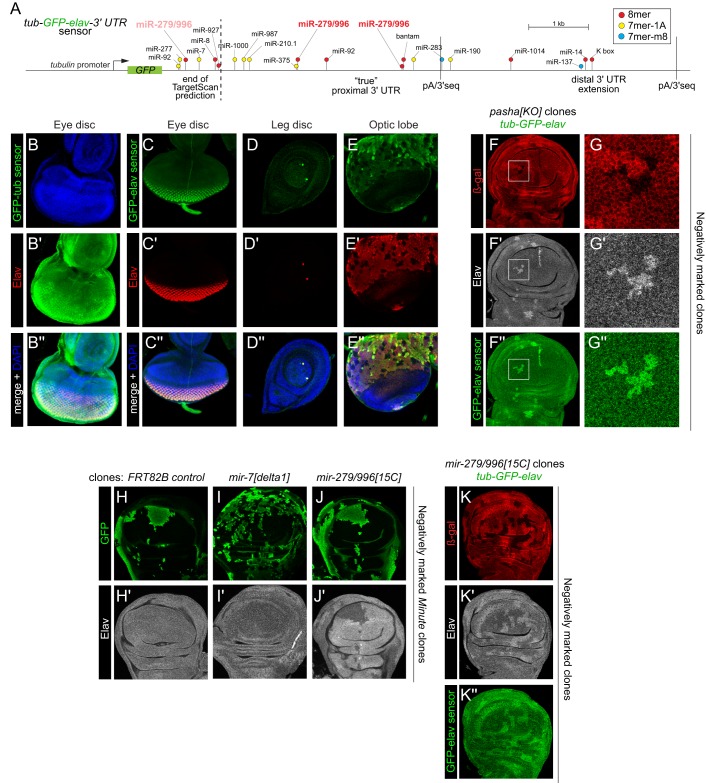Fig. 3.
Direct repression of the elav 3′ UTR via the miRNA pathway and miR-279/996. (A) The tub-GFP-elav 3′ UTR sensor transgene. We find that the 3′ terminus used in public miRNA annotations (e.g. TargetScan) is not detected in vivo. Rather, the genuine proximal 3′ UTR isoform is nearly 3 kb longer, and we identify an extended 3′ UTR isoform, both of which are supported by 3′-seq tags (as annotated). (B-K″) Images depict eye imaginal discs (B,C), leg imaginal disc (D), brain optic lobe (E) and pouch regions of wing imaginal discs (F-K) stained for reporter GFP (B-E,F,G,K), clonal markers (GFP, green or β-Gal, red) and Elav (grayscale). (B-E″) Comparison of tub-GFP-tubulin-3′ UTR and tub-GFP-elav-3′ UTR sensor transgenes. (B) The tub 3′ UTR sensor is broadly expressed in the eye disc, as well as other tissues (not shown). (C-E) The elav 3′ UTR restricts ubiquitously expressed GFP into the pattern of endogenous Elav protein, as seen by their colocalization in several tissues. (F-G″) Mitotic pasha[KO] clones (marked by absence of β-Gal staining) show coincident derepression of Elav and the elav 3′ UTR sensor. Boxed regions in F-F″ are magnified in G-G″. (H-J′) Tests of individual miRNA loci on post-transcriptional repression of Elav. (H) Control clones and (I) mir-7 null clones do not affect Elav, whereas clones of mir-279/996 derepress Elav protein (J). (K-K″) Clonal deletion of mir-279/996 causes concomitant elevation of Elav and the elav 3′ UTR sensor. At least five imaginal discs were assayed for each genotype, and each set of stainings was performed at least twice; representative clones are shown.

